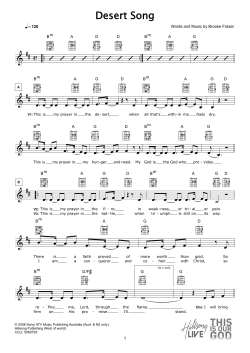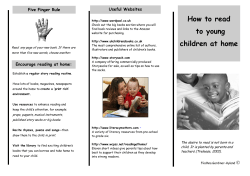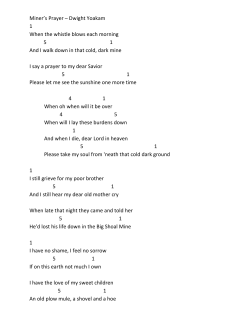
Salah Part I: Before You Start
How to Perform Salah (Ritual Prayers) By Ælfwine Mischler & Wa’il Shihab Part I: Before You Start Prerequisites of Ritual Prayer First and foremost, the worshiper should be physically and ritually clean. The body and clothes must be free of urine, feces, blood (other than your own, which is forgiven), et cetera. However, sweat, mud, dust and the like are not impurities and need not be removed. To be ritually clean, the worshiper must perform ablution called wudu’ before praying. If the worshiper has major ritual impurity, such as sexual emission, he or she must perform a ritual bathing of the whole body, called ghusl. See Conditions of Prayer: Physical Purity for details. If after making ablution, one passes gas or does anything else to nullify the ablution, he or she must perform ablution again. If the ablution is nullified during the Prayer, he or she must leave the Prayer, repeat the ablution, and start the Prayer from the beginning. Note that a woman who is having her menstrual period or postpartum bleeding cannot perform ritual Prayers until the bleeding has stopped and she has performed ghusl. But it is recommended that she stop what she is doing at the times of the Prayer and remember Allah and supplicate Him. She does not have to make up for the missed Prayers. For more details you can read: Acts that Nullify Ablution and Things that Necessitate Ghusl The Place of Prayer The worshiper must have a clean place to perform the Prayer where there are no impurities on the ground. Also there should be no statues or pictures in front of him. It is not necessary to have a prayer rug or special cloth, but many find this convenient, especially in public places or at work. What to Wear While Praying A man must be covered from the navel to the knees when performing ritual Prayer. It is highly recommended that he also cover his chest and shoulders. A woman must be covered from head to foot with opaque clothing, with only her hands and face showing. It is best if she covers her feet while praying. It is not necessary to have special clothes to pray in. However, most women find it convenient to have a one- or two-piece loose garment that they can put on over their other clothes when they pray at home. The Adhan 1 The Adhan (the Call to Prayer) should precede the obligatory Prayer, followed by the Iqamah (a shortened version of the Adhan signifying that the worshipers have stood up and are ready for the Prayer). If the Adhan and the Iqamah are already given, (by others) and the worshiper is about to perform the Prayer in congregation, he can simply join the congregation. If he is going to perform one of the obligatory Prayers alone, it is recommended that he say the Adhan and the Iqamah before performing the Prayer. For more details, read: The Adhan (The Call to Prayer). You can also Listen to the Adhan. Introduction Part I: Before You Start Part II: Steps in Ritual Prayer Part III: Praying in Congregation (Jama`ah) Part II: Steps in Ritual Prayer The Prayer is made of a series of postures and movements, each set of which is called a rak‘ah. Each Prayer consists of two or more rak‘ahs (the Arabic plural is rak‘aat). The Prayers must be said in Arabic (except for new Muslims who cannot yet do so). Before beginning the Prayer, the worshiper must have the proper intention to pray. He should say in his heart his intention to pray a particular Prayer and how many rak‘ahs he will pray. Details of this will be given later. First, let us see how the Fajr (Dawn) Prayer is performed. It consists of two rak‘ahs, and it is said aloud, not silently. 1. Face the qiblah, which is the direction of the Ka‘bah (the Holy House of Allah in Makkah). For the qiblah in your town, consult the local mosque or www.islamicfinder.com. 2. Raise the hands to the ears and say aloud: Allaahu Akbar. (This means: Allah is Greatest.) 3. Place the left hand on the chest and then place the right hand over the left hand. Recite aloud Al-Fatihah (the Opening Surah of the Qur’an). Al-Fatihah must be said in every rak‘ah of every Prayer. Bismillaahi-r-Rahmaani-r-Raheem. Al-hamdu lillaahi Rabbi-l-‘aalameen. Ar-Rahmaani-r-Raheem. Maaliki yawmi–d-deen. Iyyaaka na‘budu wa iyyaaka nasta‘een. 2 Ihdina-s-siraatal mustaqeem. Siraatal-ladheena an‘amta ‘alayhim ghayr-il maghdoobi ‘alayhim, wa la-ddaalleen. Ameen. (This means: In the name of Allah, the Most Gracious, the Most Merciful. Praise be to Allah, Lord of the Worlds. The Most Gracious, the Most Merciful. Master of the Day of Judgment. You (alone) we worship; You alone we ask for help. Show us the straight path, the path of those whom You have favored, not (the path) of those who earn Your anger nor of those who stray. Amen.) 4. Recite aloud any surah, or at least a few verses, of the Qur’an. For example, here is Surat Al-Ikhlas (number 112): Qul huw-allaahu ahad, Allaahu-s-Samad. Lam yalid, wa lam yoolad, wa lam yakun lahu kufuwan ahad. (This means: Say: He is Allah, the One and Only; Allah, the Eternal, Absolute. He begets not, nor is He begotten; And there is none like unto Him.) 5. Raise your hands to your ears as you did at the beginning and say aloud: Allaahu Akbar. Then bow down, placing your hands on your knees and keeping your back straight. This position is called ruku‘, and in this position say silently three times: Subhaana Rabbiy al-‘Azheem. (This means: Glory be to my Lord, the Supreme.) 6. Return to the standing position while saying aloud: Sami‘a-llaahu liman hamidah. 3 (This means: May Allah hear the one who praises Him.) Then say silently: Rabbanaa wa laka-l-hamd. (This means: Our Lord, for You is all praise.) 7. Raise your hands to your ears and say aloud: Allaahu Akbar. Then prostrate, with your forehead, nose, hands, knees, and bottoms of the toes touching the ground. Keep your forearms and elbows raised off the floor. This position is called sujud. While in this position, say silently three times: Subhaana Rabbiy al-A‘laa. (This means: Glory be to my Lord, the Most High.) 8. Say aloud: Allaahu Akbar. Then sit up on your heels. 9. Again say aloud: Allaahu Akbar. and prostrate again. Again say silently while prostrating: Subhaana Rabbiy al-A‘laa. (This means: Glory be to my Lord, the Most High.) 10. Say aloud: Allaahu Akbar. Then stand up. You have now completed one rak‘ah (unit) of the Prayer. You will now repeat the steps, but you may recite different verses of the Qur’an after Al-Fatihah. 11. Place your hands on your chest as before and recite Al-Fatihah (the Opening Surah of the Qur’an) aloud. Remember that Al-Fatihah must be said in every rak‘ah of every Prayer. Bismillaahi-r-Rahmaani-r-Raheem. Al-hamdu lillaahi Rabbi-l-‘aalameen. Ar-Rahmaani-r-Raheem. Maaliki yawmi–d-deen. 4 Iyyaaka na‘budu wa iyyaaka nasta‘een. Ihdina-s-siraatal mustaqeem. Siraatal-ladheena an‘amta ‘alayhim ghayr-il maghdoobi ‘alayhim, wa la-ddaalleen. Ameen. (This means: In the name of Allah, the Most Gracious, the Most Merciful. Praise be to Allah, Lord of the Worlds. The Most Gracious, the Most Merciful. Master of the Day of Judgment. You (alone) we worship; You alone we ask for help. Show us the straight path, the path of those whom You have favored, not (the path) of those who earn Your anger nor of those who stray. Amen.) 12. Recite aloud any surah (or a few verses) of the Qur’an. For example, you may recite Surat Al-Falaq (number 113): Bismillaahi-r-Rahmaani-r-Raheem. Qul: A‘oodhu birabbi-l-falaq Min sharri maa khalaq, Wa min sharri ghaasiqin idhaa waqab, Wa min sharri-n-naafaathaati fi-l-‘uqad, Wa min sharri haasidin idha hasad. (This means: In the name of Allah, the Compassionate the Merciful. Say: I seek refuge in the Lord of daybreak From the evil of that which He created, From the evil of the darkness when it is intense, And from the evil of malignant witchcraft, And from the evil of the envier when he envies.) 13. Raise your hands to your ears as you did at the beginning and say aloud: Allaahu Akbar. Then bow down with your hands on your knees (ruku‘). In this position say silently three times: Subhaana Rabbiy al-‘Azheem. 5 (This means: Glory be to my Lord, the Supreme.) 14. Return to the standing position while saying aloud: Sami‘a-llaahu liman hamidah. (This means: May Allah hear the one who praises Him.) Then say silently: Rabbanaa wa laka-l-hamd. (This means: Our Lord, for You is all praise.) 15. Then say aloud: Allaahu Akbar. and prostrate as before (sujud). While in this position, say silently three times: Subhaana Rabbiy al-A‘laa. (This means: Glory be to my Lord, the Most High.) 16. Say aloud: Allaahu Akbar. and then sit up on your heels as before. 17. Again say aloud: Allaahu Akbar. and prostrate again. Again say silently while prostrating: Subhaana Rabbiy al-A‘laa. (This means: Glory be to my Lord, the Most High.) 18. Say aloud: Allaahu Akbar. then sit on your heels as before. 19. While sitting, rest your hands on your thighs and say silently the words of the first part of the Tashahhud: At-tahiyaatu lillaahi wa-s-salawaatu wa tayyibaat. As-salaamu ‘alayka ayyuha-n-nabiyyu wa rahmatu-llaahi wa barakaatuh. As-salaamu ‘alayna wa ‘ala ibadillaahi-s-saaliheen. - Ash-hadu an laa ilaha illaa-llaahu, wa ash-hadu anna Muhammadan ‘abduho wa rasooluhu. 6 (This means: All glorification is for Allah. All acts of good deeds and worship are for Him. Peace and the mercy and blessings of Allah be upon you, O Prophet. Peace be upon us and all of Allah’s righteous servants. - I bear witness that there is no god but Allah, and I bear witness that Muhammad is His Servant and Messenger.) - It is recommended to point your right index finger forward while reciting this part. 20. Because this is a two-rak‘ah Prayer, you will now recite silently the second part of the Tashahhud: Allaahumma salli ‘ala Muhammadin wa ‘ala aali Muhammadin kamaa sallayta ‘ala Ibraheema wa ‘ala aali Ibraheem. Innaka hameedun majeed. Allaahumma baarik ‘ala Muhammadin wa ‘ala aali Muhammadin kamaa baarakta ‘ala Ibraheem wa ‘ala aali Ibraheem. Innaka hameedun majeed. (This means: O Allah, exalt Muhammad and the family of Muhammad as You exalted Ibrahim (Abraham) and the family of Ibrahim. Verily You are full of praise and majesty. O Allah, bless Muhammad and the family of Muhammad as You blessed Ibrahim and the family of Ibrahim. Verily, You are full of praise and majesty.) 21. Now say the Tasleem to close the Prayer. Turn your head to the right and say aloud: As-salaamu ‘alaykum wa rahmatullah. (This means: Peace be on you and the mercy of Allah.) Then turn your head to the left and say aloud: As-salaamu ‘alaykum wa rahmatullah. This completes the Fajr Prayer of two rak‘ahs (units). Prayers of More Than Two Rak‘ahs Summary of the Five Daily Prayers Name Number of Rak‘ahs Silent/Aloud Fajr (Dawn) 2 Aloud Zhuhr 4 Silent 7 1. The other obligatory daily Prayers have more than two rak‘ahs. Perform the first two rak‘ahs in the same manner as the Fajr Prayer, through step 19. ‘Asr (Afternoon) 4 Silent Maghrib (Sunset) 3 First 2 aloud, third silent ‘Isha’ 4 First 2 aloud, last After reciting the first part of two silent the Tashahhud (ending with “Ash-hadu an laa ilaha illaallaahu, wa ash-hadu anna Muhammadan ‘abduho wa rasooluhu.”) at the end of the second rak‘ah, stand up and pray the third (and fourth) rak‘ah as you did the first two, with the exceptions noted below. 2. The third and fourth rak‘ahs are said silently, and there is no need to recite other Qur’an verses. Only Al-Fatihah is recited. 3. If it is the Maghrib (Sunset) Prayer, at the end of the third rak‘ah, recite both parts of the Tashahhud and close the Prayer with Tasleem. 4. If it is the Zhuhr ( Noon ), ‘Asr (Afternoon), or ‘Isha’ (Night) Prayer, perform four rak‘ahs. At the end of the fourth rak‘ah, recite both parts of the Tashahhud and close the Prayer with Tasleem. Part III: Praying in Congregation (Jama`ah) Salah (ritual Prayer) in congregation of two or more persons is 27 times better than Prayer alone. If the group comprises both men and women, the men stand in rows in front of the rows of women. This is to prevent anyone from being distracted by standing next to someone of the opposite sex and to preserve women’s modesty when they bow and prostrate. Where the Imam Stands One person should be designated as the imam (Prayer leader). This should be the person who knows the most Qur’an. If all are equal in this, then the imam should be the one who knows the most Sunnah. In a house, the owner of the house has the right to lead the Prayer, but he or she may designate someone else who knows more Qur’an. If a man and woman (such as husband and wife) are praying, the man should, of course, lead the Prayer and stand in front of the woman. If two men are praying together, the imam should stand to the left and slightly ahead of the other. If there are three or more men, the imam should stand by himself in front of the others, who should then form a straight row (or rows) behind him. If there are also women, they can form a row (or rows) behind the last row of men. 8 When only women are praying together, if there are only two, the imam should stand to the left of the other in a row with her (not slightly ahead of her as with men). If there are three or more women, the imam should stand in the middle of the row (not ahead of the row as with men). When standing in rows, the worshipers should stand close together with shoulders close to each other. There should not be gaps between people. How the Prayer is Performed Before beginning the Prayer, someone should say the Iqamah aloud. It is preferable that this be someone other than the imam. The imam says, “Allaahu Akbar” aloud. The others should similarly raise their hands to their ears and repeat the words silently or in a whisper. If this is a silent Prayer (Zhuhr or ‘Asr), the imam recites Al-Fatihah and the verses of the Qur’an silently. The others should do likewise. If the Prayer is said aloud (Fajr, Maghrib or ‘Isha’), the imam recites Al-Fatihah aloud. The others should say “Ameen” aloud at the end. The imam then recites aloud some verses of the Qur’an, and the others should listen attentively. The imam says, “Allaahu Akbar” aloud before bowing in ruku‘. The others should then bow and say silently, “Subhaana Rabbiy al-‘Azheem.” As the imam stands he says aloud, “Sami‘a-llaahu li man hamidah.” The others should then stand and say silently, “Rabbanaa wa laka-l-hamd.” For the remainder of the rak‘ah, the imam says, “Allaahu Akbar” aloud before each movement (prostrating, sitting or standing) and the others should then follow his movement. They should move only after the iman says, “Allaahu Akbar.” In a Prayer of more than two rak‘ahs, the imam recites Al-Fatihah silently in the third and fourth rak‘ahs. The Tashahhud is said silently, as when praying alone. The Tasleem is said aloud first by the imam, and then the worshipers repeat it silently as they turn their heads. 9
© Copyright 2025












